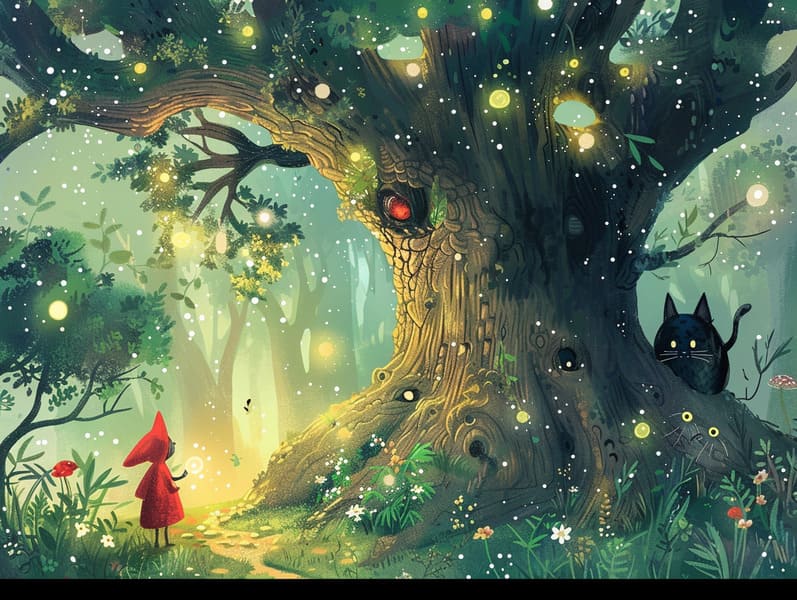The Genesis of Ancient Fairy Tales and Their Perpetual Grandeur.
The Genesis of Ancient Fairy Tales and Their Perpetual Grandeur.
Blog Article

Popular fairy tales have old origins. These narratives have been relayed from one generation to the next long before they were ever documented. They came from a variety of cultures, including Middle Eastern traditions. They were initially transmitted among grown-ups, often carrying themes and messages reflective of the societal norms and beliefs of the time.
Jacob and Wilhelm Grimm, Jacob and Wilhelm Grimm, were among the first to assemble many of these beloved stories. Their published works, "Grimm's Fables," included narratives like "Cinderella," "The Story of Hansel and Gretel," and "The True Story of Snow White," which have since become staples in the world of iconic fairy tales. Similarly, Hans Christian Andersen's enchanting narratives, such as "The Story of the Little Mermaid," and "The Story of the Ugly Duckling," have touched hearts worldwide, establishing their place in the pantheon of treasured fairy tales.
Despite their age, fairy tales remain as applicable as ever, especially as kids' bedtime tales. These magical stories are now available in various formats, including artistically illustrated books, delightful animations, and digital fairy tales.
Their unwavering allure can be linked to several charming aspects:
Important Morals: Traditional fairy tales often offer important moral lessons. Narratives like "The Story of the Boy Who Cried Wolf" teach the value of being truthful, while "The Story of the Tortoise and the Hare" exemplify the benefits of steadfastness and unassuming nature. These stories offer the young clear distinctions between correct and incorrect, helping to shape their moral compass in a tender yet lasting way.
Compassion and Insight: Ancient fairy tales frequently feature beings facing difficulties and adversities, stimulating young readers to comprehend with their struggles and encourage their triumphs. For instance, "The Story of Beauty and the Beast" shows us the significance of valuing inner qualities to know the real person of a being, nurturing understanding and recognition.
Cultural Comprehension: Many ancient fairy tales are infused with the cultural contexts from which they arose. Understanding these fairy tales can provide enlightening views into different social structures, building a sense of global awareness and understanding.
Creativity and Fantasy: The mythical elements in old fairy tales—fairy godmothers—kindle children’s creative dreams. These stories lead readers to imaginary realms, generating creative thinking and a sense of fascination that persists a lifetime.
Ancient fairy tales are not only whimsical but also illuminating. They act as spellbinding tools in fostering various thinking and feeling skills in little ones. When timeless fairy tales are spoken out loud, they enhance language proficiency by introducing new terms and meanings and complex sentence structures. This practice also nurtures listening skills and attention span, as kids concentrate deeply, eager to see what happens next.
Furthermore, exploring the themes and characters of timeless fairy tales can cultivate evaluative skills and reasoning skills. Young readers learn to discern patterns, expect results, and understand cause and effect. These contemplations also further the young verbalize their thoughts and feelings, advancing their emotional intelligence.
In today’s online age, the existence of online fairy tales has made these tales more accessible than ever. Digital sites and apps feature ample collections of ancient fairy tales that can be viewed or listened via anytime, anywhere. Fairy tales narrated are particularly widespread, featuring an engaging way for little ones to enjoy these charming stories. Narrated books and read-aloud videos guide characters and settings to life, often joined by captivating soundtracks and background music that augment the storytelling journey.
The everlasting appeal of old fairy tales lies in their ability to modify to present days while continuing with their key morals. Contemporary takes of these stories often show more varied figures and modern settings, making them meaningful to today’s audience. However, the central morals of guts, goodness, and integrity remain unchanged, continuing to reach young readers of all ages.
Fairy tales also offer a sense of protection and comprehensibility. They make available a coherent narrative with a apparent beginning, middle, and end, often closing with the ending of conflicts and the triumph of honesty over deceit. This regularity can be placating for young readers, sharing a sense of consistency in an inconstant world.
Old fairy tales continue to spellbind and guide new generations, maintaining their enchantment and relevance in modern society. As children's night stories, they bestow a perfect blend of delight and instruction, cultivating moral values, empathy, and creativity. The abundance of internet fairy tales and the widespread nature of fairy tales recited validate that these timeless stories remain obtainable to new generations.
By conserving and telling these stories, we continue to recognize the rich tapestry of fantasy and cultural heritage. Whether best fairy tales to read online you are enjoying a richly illustrated book, discovering a cyber library, or listening to an audiobook, the mystique of ancient fairy tales is always within reach. These tales convey of the ageless impact of storytelling and its ability to link us across generations and cultures.
Whether you are perusing a gorgeously illustrated book, experiencing a electronic collection, or listening through an sound book, the radiance of ancient fairy tales is always within reach.
These narratives show us of the eternal impact of storytelling and its ability to hold us together across centuries and lands, casting a charm that charms and informs alike.